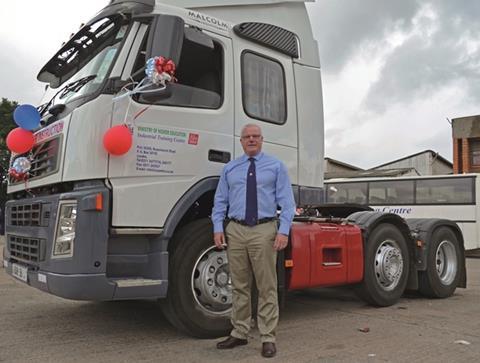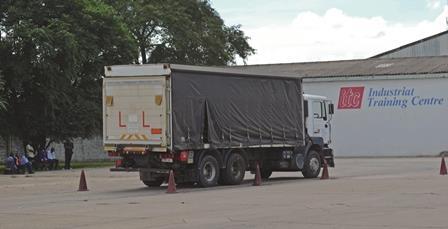
Driver training is one of the main bearings in the engine of economy and safety. Paired with telematics it ekes out all the incremental gains. But elsewhere in the world, driver training has a more basic function. Ian Norwell reports from Transaid’s Zambian projects.
Transaid’s work is well known to most MT readers – its goal is that no driver should leave for work with a high probability of not coming home. In most of sub-Saharan Africa, deaths and serious injury from road traffic collisions jostle for position with malaria and HIV/AIDS as the most common cause of death. So what is Transaid doing in Zambia?
Working with a very modest truck and bus training fleet, Transaid is partnered with the government-approved Industrial Training Centre (ITC) in Lusaka to deliver high quality training. There are other alternatives locally, but the ITC has established a reputation for turning out safer drivers, and a certificate from them carries weight with fleet managers. Victor Simfukwe, Transaid’s project manager in Lusaka, says, “We’ve trained 7,500 drivers here in the last five years, and this will be having an effect, in neighbouring countries too.”
They have managed that with just over half a dozen rigids, a tractor-trailer combination and a single coach. We joined a small party of Transaid’s corporate members who were looking at the progress being made. Among them was Alan Thornton, commercial director of Renfrewshire-based Malcolm Logistics, who was also there to officially hand over a donated 2005 Volvo FM12 6x2 tractor.
Thornton commented: “Seeing with my own eyes where this truck will be working, and the enthusiasm of the trainees here, is a humbling experience.” But after trainees have qualified, what awaits them?
Good shape
Our first impressions were that the roads were in pretty good shape, out of town at least. But the full picture emerged as we travelled 400km north east to visit Transaid’s anti-malaria project in Serenje. In town, poor surfaces, with sudden catastrophic carriageway failures, are mixed with major intersections where nose-first-goes-first applies. Collisions happen, but they’re not often fatal. But the long-distance major trunk roads are a different matter. Almost all are single carriageway, and well surfaced with only the occasional ruinous pothole. The government sees to it that they are kept up to scratch, as they are industrial arteries.

Trucks and buses dominate here, but the rural communities the roads pass through treat them as a market place, with roadside stalls selling maize, sweet potatoes and charcoal. It’s an unhealthy and dangerous mix, but if you’ve walked along these roads to school since you were four or five, you’ve become inured to the threat. We witnessed the inevitable result, 360km north east of Lusaka. A long black wide stripe of rubber, a forlorn single shoe left on the highway, and the body of a young child under a sheet on the roadside. There was a crowd gathering, the women running to the scene, mobiles to their ears, as the dreadful news spread. It was all like a macabre silent movie. This single statistic of the many hit us squarely between the eyes.
Pedestrians and cyclists of all ages are playing Russian roulette here, every day. The biggest trucks are the ‘interlinks’ that feed the Copperbelt mines with machinery and supplies, and carry the ingots away. At 56 tonnes and 22 metres, they are essentially a three axle tractor hauling two tandem axle trailers, using two fifth wheel couplings. Drivers who are typically paid per job, unencumbered by a tachograph, are on a mission. The ITC highlights the dangers in its training, but communities must learn too.
Another life
The training fleet at the ITC works hard. With just a few more resources, a lot more could be done. The Volvo FM12 from Malcolm Logistics will make a big impact, but when asked what would be on his wishlist the acting director of the ITC, Lloyd Mbasela, throws up his hands. With a smile, he says: “Almost anything!” Pressed, he admitted that their PSV training is in dire need of another chassis. Their current lone 12m coach, donated by loyal supporter Stagecoach many years ago, is a Jonckheere-bodied Volvo that now looks like it’s been in a war zone.
Several deceased semi-trailers adorn the yard, and there’s no sign of a tanker. But there are big numbers of fuel tankers on the highways here, so if any petrochemical fleet manager in the UK has an aged tanker that is beyond their own use, this would be the perfect home for it. If you’re in any doubt, just ask Alan Thornton if it’s worth doing.














